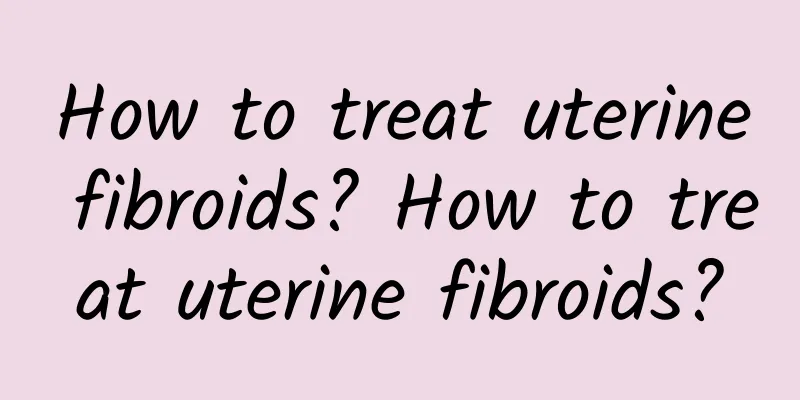What are the types of uterine fibroids? When should uterine fibroids be operated on?

|
Uterine fibroids are a serious gynecological disease, but many people don't know much about it. What types of uterine fibroids will be introduced below? How many surgeries are needed for uterine fibroids? Medicine mainly divides uterine fibroids into three categories based on the growth location of uterine fibroids and their relationship with the uterine muscle wall. Intramural uterine fibroids: located in the myometrium, accounting for about 60%~70% of the total number of uterine fibroids; subserosal uterine fibroids: growing under the uterine serosa and protruding from the surface of the uterus, accounting for about 20%~30% of the total number of uterine fibroids; submucosal uterine fibroids: uterine fibroids grow into the mucosal layer and protrude into the uterine cavity, accounting for about 10%~15% of the total number of uterine fibroids. The location of uterine fibroids is closely related to the patient's symptoms. Generally speaking, submucosal uterine fibroids are most likely to cause symptoms, followed by intramural uterine fibroids. In addition, according to the number of uterine fibroids, they can be divided into single uterine fibroids and multiple uterine fibroids; according to the location of uterine fibroids, they can be divided into uterine fibroids and cervical uterine fibroids. How many surgeries are needed for uterine fibroids? It is understood that the current treatment methods for uterine fibroids include conservative treatment and surgical treatment, which are mainly determined by the patient's condition, such as the number, size, location, age, fertility, etc. Conservative treatment includes drug treatment and intrauterine ring placement, which is more suitable for patients with mild symptoms, under 40 years old, and with fertility needs. For patients with complex conditions, no fertility needs, and a single uterine fibroid with a diameter of more than 5 cm, it is best to consider surgical treatment. |
>>: When is uterine fibroids considered serious? How to judge uterine fibroids
Recommend
Can chronic adnexitis be completely cured?
Chronic adnexitis is a disease that many women su...
What medicine to take to treat Trichomonas vaginitis
Trichomonas vaginitis can be treated with traditi...
Diet therapy for amenorrhea
(1) Peach kernel and ox blood soup: 10-12g peach ...
What are the causes of cervical erosion?
Cervical erosion is a normal physiological phenom...
Gwyneth Paltrow's favorite: myofascial exercise! Step dance body sculpting, pain relief
The Brazil Olympics is in full swing, but there h...
What is the reason for blood clots during menstruation?
The presence of blood clots during menstruation i...
What should I do if my period is delayed after medical abortion?
What should I do if my period is delayed after me...
Lose weight without burden ~ Eat mindfully and lose weight
Weight loss and nutrition have always been topics...
Will taking birth control pills delay menstruation? Menstrual disorders
Taking birth control pills will cause an increase...
How did you get pelvic inflammatory disease?
There are many causes of pelvic inflammatory dise...
What are the Chinese patent medicines for treating amenorrhea?
What are the Chinese patent medicines for treatin...
Correct exercise method for patients with threatened abortion
Pregnant mothers still only know about resting in...
Is it a big deal if a woman has sex with a condom 20 days after an abortion?
It is usually not recommended for women to have s...
Remember the three principles of weight loss in the critical month after the New Year
During the Chinese New Year, people are inevitabl...
The tomato diet is revealed! Famous doctor Cai Fengbo lost 11 kg by eating tomatoes, 5 tips to lose weight easily
Losing weight has become a national sport, but th...









